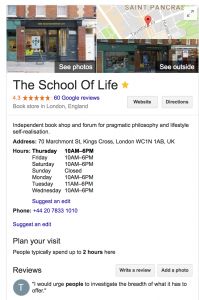When it comes to keeping your business visible, your online presence is perhaps the biggest contributor to your success. While print, radio, and TV advertising can still be a significant part of your marketing strategy, they don’t make nearly as much of an impact as your digital mark.
Since your website and social media accounts are often the first things people see and associate with your brand, your online presence is paramount to your overall performance as an organization. So, how do you make sure it’s helping rather than hindering your success?
Your Website
Websites are constantly evolving with new capabilities and features. You can’t simply rely on the website you set up some number of years ago to carry you through the digital age — it will make your organization look old-fashioned and outdated. This requires constant upkeep and refreshing.
Mobile Responsiveness
One of the most important steps you need to take is ensuring that your website is optimized for mobile. Just because it looks decent on your laptop doesn’t mean it will have the same appeal on the mobile screen. Given that this is how a majority of people will view it, this is an essential part of your digital strategy. This will also help your site rank well in Google results.
User Experience
User experience (UX) is another important facet of your website. This incorporates a number of topics, including performance, appearance, animation, clickable components, and other features. Not sure how you can make your site more UX-friendly? A UX designer can help you create a better customer experience.
SEO
Search Engine Optimization (SEO) is constantly evolving, so there’s no clear set of guidelines or magic list of keywords to ensure your website is indexed properly and is easily searchable. You’ll need to keep up with SEO best practices and adjust accordingly, constantly keeping tabs on how your site is ranking and revising your copy, images, and other features accordingly.
Content
Today, it’s not enough to simply have an informative website. You need to offer additional value to entice users to engage with your brand. Examples of content to offer include:
- A blog with expert insights
- Videos
- Webinars
- Infographics
- Podcasts
Make sure you’re updating your content frequently, striking a balance between evergreen posts and timely additions.
Security
Keep your website devoid of hacking and other cybercrimes by using strong security measures, such as implementing Hypertext Transfer Protocol Secure (https), frequently updating and scanning the site for vulnerabilities, and more. It’s also a good idea to hire an ethical hacker or cybersecurity expert to identify weaknesses and help ensure that you’re protecting yourself.
Analytics
How is your business’ website performing? Google Analytics helps you track metrics such as page views, unique visitors, click-through rate (CTR), traffic at different times of the day, and much more. Knowing this information will enable you to inform your marketing and digital strategy and make changes depending on what you learn.
Social Media
Social media is a vital part of your marketing strategy and digital presence. It’s not enough to simply establish an account and post away. You need to build your social media around your brand and base your decisions on solid data.
Platforms
Start by choosing the right platforms for your brand. If you’re a huge company like Amazon, you can, of course, cast an extremely wide net, with specialists dedicated to individual channels and sub-brands. But if you’re a smaller business or startup, start with the crucial platforms that are best correlated to the message you want to send.
For example, a retail merchandiser might do well on Instagram, while a less visually-oriented company, such as a software developer, would do better on LinkedIn and Facebook.
Once you’ve established your presence on a specific platform, you’ll need to ensure that your content is geared toward the audience that uses it. Remember, for instance, that LinkedIn targets businesses and professionals, so posts should include a more formal tone.
Content
To that end, curate and create your content carefully. Post regularly, according to the industry standards for a specific platform, and build a mix of:
- Expert contributions
- Straight advertising and promotions
- Reviews and opinions from customers
- Blog content
- Industry news
These are just some of the topics to share on your various channels. Tailor the approach according to your business and overall marketing strategy.
Calls to Action
Include a clear call to action (CTA) in all your posts. You might direct users to your website or a particular campaign, for example. Or you might post a blog link to encourage them to read an article or watch a video. You can keep your approach subtle, but the CTA should still be obvious.
Ads
Paid advertising campaigns can expand your reach to your audience, allowing you to target others who might be interested in your brand. Many social media platforms allow you to choose different demographics or people with various interests.
Of course, you shouldn’t rely solely on these types of posts. Instead, mix them with organic posts — advertising usually targets people who aren’t already consumers, while organic content tends to drive engagement with current users.
Your online presence is the gateway to your business. These strategies can help you maximize your digital footprint to engage with current consumers and reach new ones, helping drive brand awareness and sales.
Digital & Social Articles on Business 2 Community(49)







